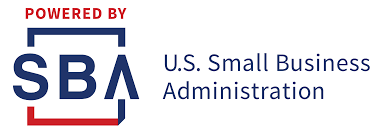
As part of the federal Coronavirus Aid, Relief, and Economic Security Act (CARES Act) enacted on May 27, 2020, the Federal Paycheck Protection Program provides enhanced funding for businesses suffering due to the coronavirus outbreak to borrow money for costs related to employee compensation and benefits.
The Paycheck Protection Loan Program, at a price tag of $349 billion, covers the period February 15, 2020 through June 30, 2020 and greatly expands SBA loan eligibility. The loan program will allow businesses suffering due to the coronavirus outbreak to borrow money for a variety of qualified costs related to employee compensation and benefits, including:
(i) payroll costs
(ii) continuation of health care benefits
(iii) employee compensation (of those making less than $100K)
(iv) mortgage interest obligation
(v) rent
(vi) utilities
(vii) interest on debt incurred before the covered period
Additional details
- The legislation greatly expands the number of businesses that are eligible for SBA loans and raises the maximum amount for such a loan by 2.5 x the average total monthly payroll costs, or up to $10 million. The interest rate may not exceed 4%.
- Companies that employ more than 500 employees are not eligible.
- The legislation waives the credit available elsewhere and person guaranty requirements.
- The legislation provides additional relief for businesses in the accommodation and food services industries, certain franchise business and small businesses that receive financing through the Small Business Investment Company Act.
- For eligibility purposes, lenders are required, instead of determining repayment ability (which is not possible during the crisis), to determine whether a business was operation on February 15, 2020, and had employees for whom it paid salaries and payroll taxes, or a paid independent contractor.
Loan Forgiveness
- Establishes that the borrower shall be eligible for loan forgiveness equal to the amount spent by the borrower during an 8-week period after the origination date on (i) rent, (ii) payroll costs for employees making less than $100K, (iii) interest on a mortgage, and (iv) utility payments. The amount forgiven may not exceed the principal of the loan.
- Incentivizes
companies to retain employees by reducing the amount forgiven proportionally by
any reduction in employees retained compared to the prior year.
- To encourage employers to rehire any employees who have already been laid off due to the COVID-19 crisis, borrowers that re-hire workers previously laid off will not be penalized for having a reduced payroll at the beginning of the period.
Other
- Employee Retention Credit for Employer Subject to Closure Due to COVID-19
- Eligible employers will receive a credit against applicable employment taxes for each calendar quarter in an amount equal to 50% of the qualified wages with respect to each employee. The amount of qualified wages taken into account for each eligible employer, however, will not exceed $10,000 per calendar quarter and the credit will not exceed the applicable employment taxes owed for such calendar quarter.
- An eligible employer is defined as any employer: (i) which was carrying on a trade or business during calendar year 2020, and (ii) the operation of their trade or business was fully or partially suspended due to governmental order as a result of COVID-19
- Delay of Payment of Employer Payroll Taxes
- The CARES Act will allow for most employers to defer paying their share of the social security tax from the time the CARES Act is signed into law through December 31, 2020. Half of this deferred amount would be due on December 31, 2021 and the other half by December 31, 2022.
- Modifications for Net Operating Losses (“NOL”)
- There will be a temporary repeal of taxable income limitation including (i) in the case of a taxable year beginning before January 1, 2021, the aggregate of the NOL carryovers to such year, plus the NOL carrybacks to such year, and (ii) in the case of a taxable year beginning after December 31, 2020, the sum of the aggregate amount of NOLs arising in taxable years beginning before January 1, 2018 and the lesser of the aggregate amount of net operating losses arising in taxable years beginning after December 31, 2017 or 80% of the excess of taxable income.
